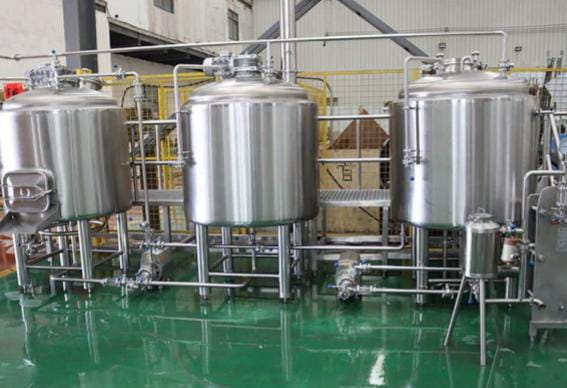In heavy industries, every minute of downtime can be costly. VCM serves as a proactive maintenance strategy. It is about measuring variations in machinery and analysing them to find and predict issues. So, issues can be spotted and fixed before further escalation.
Downtimes can lead to lost production, increased operational expense, and potential reputation damage. The heavy industry faces 23 hours of unplanned downtime per facility every month. It costs 18% of the revenue with an annual cost of $52 million per facility.
Vibration Condition Monitoring (VCM) helps analyse vibrations in machinery to predict failures and detect faults. If you want to know more about how VCM enables timely maintenance and downtime prevention, then keep reading.
Understanding Vibration Condition Monitoring (VCM)
VCM is a method used to measure the health of machinery. This involves analysing the characteristics of the vibrations given out by the machinery. So, you can detect potential issues early on, which helps prevent costly failures and downtimes.
The vibration parameters that are measured and analysed during VCM include amplitude, frequency, and velocity. The main goal is to spot anomalies that are signs of developing faults. Sensors are used for measuring the vibrations, similar to a noise monitoring process.
Here are the types of analysis techniques used and key parameters measured.
| Vibration Analysis Methods | Vibration Parameters Measure |
| Fast Fourier Transform (FFT): For identifying specific sources of vibrations and their frequencies. | Frequency: Measures how often vibrations occur, where different frequencies indicate faults in specific components. |
| Envelope Detection: For spotting bearing faults and other impacting issues based on subtle changes in vibrations. | Amplitude: Measure the intensity of vibrations, where a higher amplitude means a more severe issue. |
| Time Waveform Analysis: For visualising vibration patterns and identifying temporary anomalies. | Velocity: Measures the speed of vibration and is associated with destructive force. |
Table 1: Measurement methods and parameters used during VCM
Why VCM is Critical for Equipment Reliability
Here are the reasons that make Vibration Condition Monitoring critical for equipment reliability.
Early Fault Detection
VCM serves as an early warning system by detecting subtle changes in the vibration patterns of machines. So, your maintenance team will be able to detect the following faults early, before they turn into more severe issues.
- Imbalance: Unevenly distributed mass in rotating components.
- Misalignment: Improper alignment of rotating components.
- Bearing wear: Degradation in bearings caused by stress and friction.
Minimizing Downtime
VCM can also help with predictive maintenance. You can anticipate potential faults and take actions rather than just reacting to failures. So, you can schedule maintenance and repairs during planned downtime.
You will suffer less impact on your production line. And the need for emergency repairs will be eliminated. Planned downtimes are much less disruptive and expensive than the unexpected failures.
Extending Equipment Lifespan
VCM helps identify and address problems early. So, you can minimise the wear and stress faced by your equipment components. With such a proactive approach, you can extend the operational life of your machinery significantly. It means that the need for premature replacements will also be reduced.
Choosing the Right Vibration Monitoring Setup
Here are the aspects you should consider when choosing the right Vibration Control Monitoring setup.
Sensor Types & Placement
These are the sensors used in VCM along with placement strategies.
| Sensor Type | Placement |
| Accelerometers: Measure acceleration and support a wide range of frequencies, especially the higher ones. | Directly mounted on bearings: Mount the sensors as close to the bearings as possible, as it is the source of the signs of early failure. |
| Velocity sensors: Measure velocity and are used mainly for monitoring low to medium frequency vibrations. | Load zone: Mount the sensors near the load zone, as bearings are located there within the machinery. |
| Displacement probes: Measure the relative displacement, particularly for monitoring shaft movements. | Clean surface: Mount the sensors on a surface that is free from grease, dirt, and other contaminants. |
Table 2: VCM sensors and their placement
Portable vs. Online Systems
Here are the differences between portable and online Vibration Control Monitoring systems.
| Portable Systems | Online Systems | |
| Description | Generally, handheld devices are used for period checks. | Permanent machine-mounted devices for continuous vibration monitoring. |
| Pros | Ease of use for basic checks.Lower initial cost.Greater flexibility for different machines. | Continuous monitoring and automated collection.Advanced analytics features.Early warnings of potential issues. |
| Cons | Less continuous monitoring.Limited data storage.Manual data analysis needed. | Higher initial cost. Greater installation complexity.More expertise is required for operations and maintenance. |
Table 3: Portable vs. Online VCM systems
Data Interpretation & Maintenance Planning
You can integrate vibration data analysis with the Computerised Maintenance Management System (CMMS). These are software that organisations use for managing their maintenance operations, making assets more reliable, and optimising resource allocation. It can centralise maintenance data and streamline workflows.
You can also integrate other types of analysis with CMMS, such as noise monitoring.
The integration of VCM and CMMS will help you gain actionable insights from the vibration data, and thus help perform predictive maintenance. The integration will help you generate work orders automatically based on the spotted anomalies. So, you can optimise maintenance checks and also prevent unexpected machine failures.
Safety & Compliance Benefits
Perform vibration analysis as per standards like ISO 10816 and API 670. Make sure that machinery is maintained as per specific performance and safety requirements. This will not only allow you to enhance worksite safety but also help you demonstrate compliance with safety regulations.
Ready To Get VCM Systems?
VCM is not just a maintenance approach. It is an investment that you make to improve or enhance the safety and reliability of industrial equipment. It will ensure you ensure that faults with machinery are detected early and fixed before they worsen. So, no more downtimes, lost productivity, disrupted production, and expensive reactive repairs. Get a Vibration Condition Monitoring tool today!



